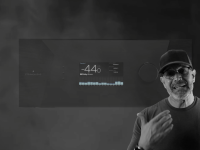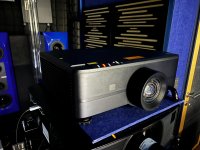原帖由 champion_HD 於 2008-12-8 09:07 發表 
謝謝 ETK 兄的回覆,我想應該接近問題的核心了.
應該是您在 12/1 的回覆讓我誤解成 Jitter 造成的結果是 data error
因此該說 buffer + handshake 機制就可以解釋我一開始問的PQLS.
我是不明白有去同步 source / d ...
我想最後我來做一下總結吧,也算是對這一個 discussion thread 做一個整理.在今天看了 Spec 出處後,我想大致水落石出了
也謝謝參予此一討論的所有網兄.感謝你們的 input 才讓最後的結論能被激盪出來
如果我的總結有誤,還請各方先進不吝指正.
(1) Audio rate control under HDMI
因為 HDMI 是以 packet 方式來傳送 Data,雖然在 source 有傳送 clock 過去 destination,但是某些 worse condition 下有可能存在極小的 clock 誤差.
(其實這誤差發生機率的大小,這篇文章還沒去深究). 但是一旦這樣的誤差發生,就可能造成 連續 audio 撥放不順.
AMP 對此提出的解法是 buffer + flow control mechanism.
SONY 稱他為 H.A.T.S (High-quality digital Audio Transfer System)
SONY 在高階的 SACD player (SCD-XA5400ES) 和高階 AMP (STR-DA5400ES) 有implement 這項技術.但似乎只有 SACD 撥放的時候才會使用到
.
http://www.marketwire.com/press-release/Sony-Europe-894014.html
SCD-XA5400ES: The Super Audio CD player for the true music lover
This is Sony's first Super Audio CD player to allow the transfer of Super Audio CD's native Direct Stream Digital audio format over HDMI, and ensures a perfect transfer to its matching AV receiver, the STR-DA5400ES (see below) via Sony's H.A.T.S., or High-quality digital Audio Transfer System.
This allows the AV receiver to control the flow of data from the player, and this, in association with buffering in the AV receiver, ensures the smoothest possible transfer between the two -- and the best possible sound.
STR-DA5400ES: A flagship AV receiver designed for today's HD entertainment
The H.A.T.S. for HDMI transfer system, used when DSD data is passed to this receiver from the new SCD-XA5400ES player, ensures the very best sound quality from Super Audio CD music.
Pioneer 稱這技術 PQLS, 精準石英鎖定,個人淺見 Pioneer 這名稱取的容易讓人誤解成和 clock 有關,但從目前手邊掌握到的資料來看其實是無關的.
但它們指的都是同樣的技術,說穿了就是 buffer + flow control (handshake). 這樣的技術其實在網路傳輸上被廣為應用.也就是 接收端(Amp) 透過某種方式
告知 傳送端 (Player) 適時的減緩傳送速度,讓 Amp 上的 buffer 不至於會爆掉.
(2) How to implement it under HDMI 1.3a
文章出處
(http://www.agoraquest.com/viewtopic.php?forum=51&topic=33151)
在 HDMI 1.3A Spec. 的 Sec 7.11 有提到參考 CEC 13.16 for detail.
CEC 13.16.2 Feature Description
This feature allows the audio playback rate of a Source Device to be controlled by another device. A device may control the audio rate from a Source Device by sending a directly addressed <Set Audio Rate> message. 這裡提到的是接收端送一個 message 給 player,而非去做clock sync.
The audio rate controlled state is left when the controlling device sends a <Set Audio Rate> message with [Audio Rate] = rate Control Off?to the Source Device. The controlling device should send a <Set Audio Rate> command at least once every 2 seconds for active sensing. If a <Set Audio Rate> message is not received within 2 seconds or the status of the Source Device changes internally, then the Source Device shall quit the audio rate controlled mode. 這樣的 <Set Audio Rate> Message 其實是有不少限制,每兩秒要傳送到 player,且若 player 兩秒內沒收到 這樣的 message 將結束 rate control 狀態. 總結上述,這是HDMI 1.3a 才提出的新機制,但我比較感覺有問題的是.既然 Spec 有明確規範,為何 Pioneer 和 Sony 會取兩個不同的名字? 是否兩家在 Implement 細節上有所差異? 如果是的話,那 User 應該要注意 Pioneer 的 Rate control message 和 Sony 的系統是否相容. i.e. 假設 Amp 是 Pioneer 那他送出的 Message, Sony 的 BD Player 是否會看不懂. 這點就留給日後要升級的網兄採購上要去留意了
[ 本帖最後由 champion_HD 於 2008-12-10 08:48 編輯 ] | 



